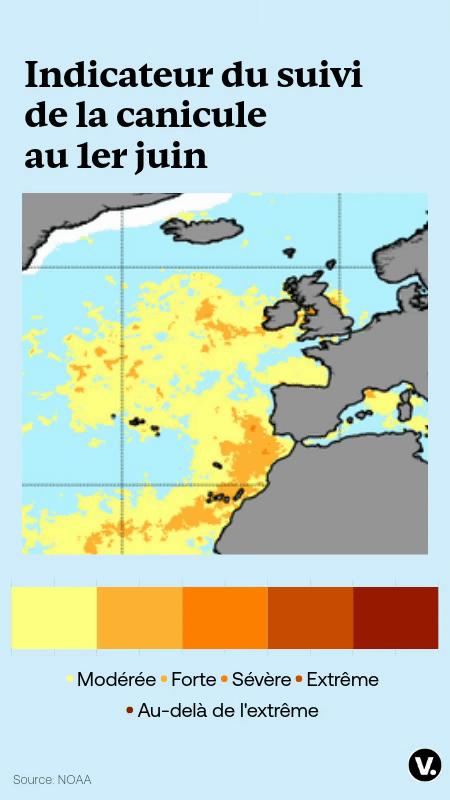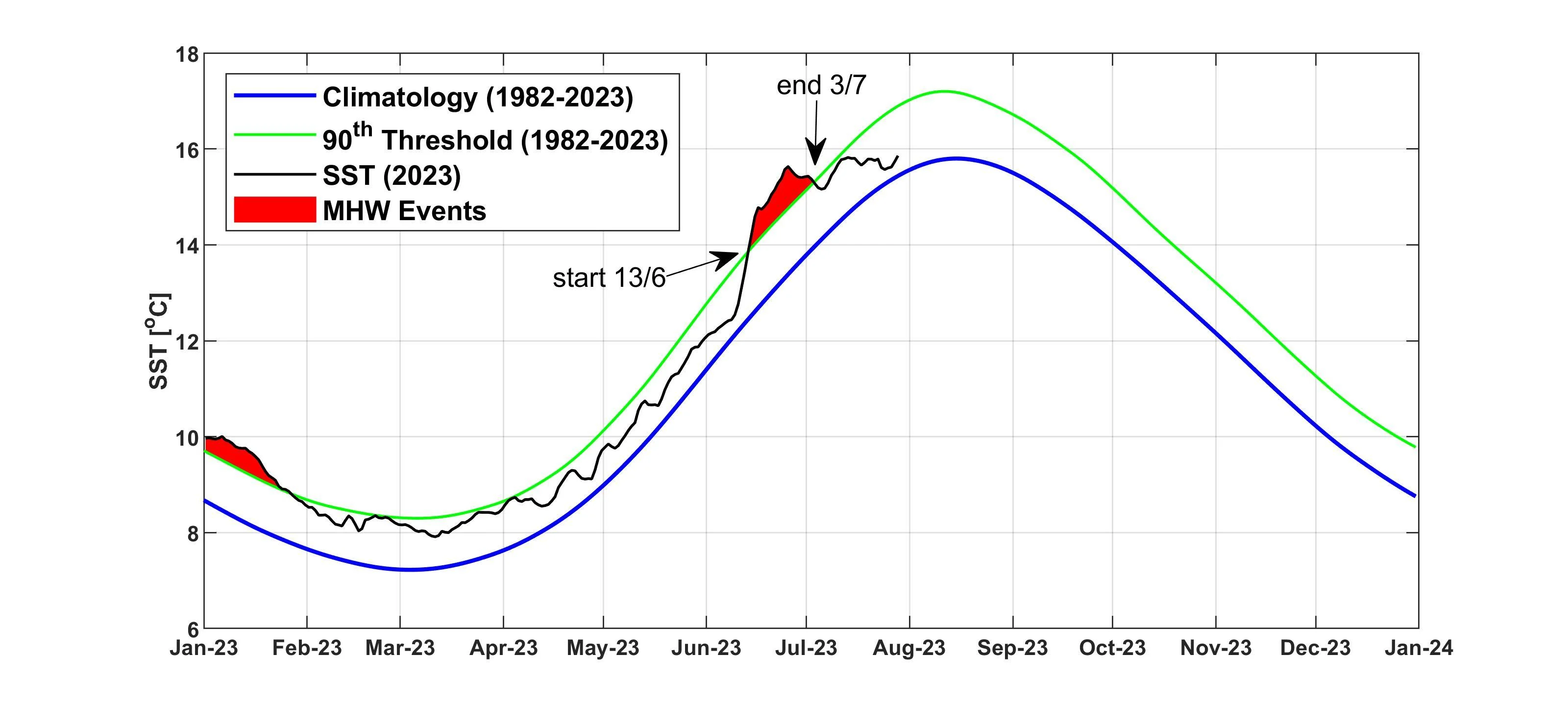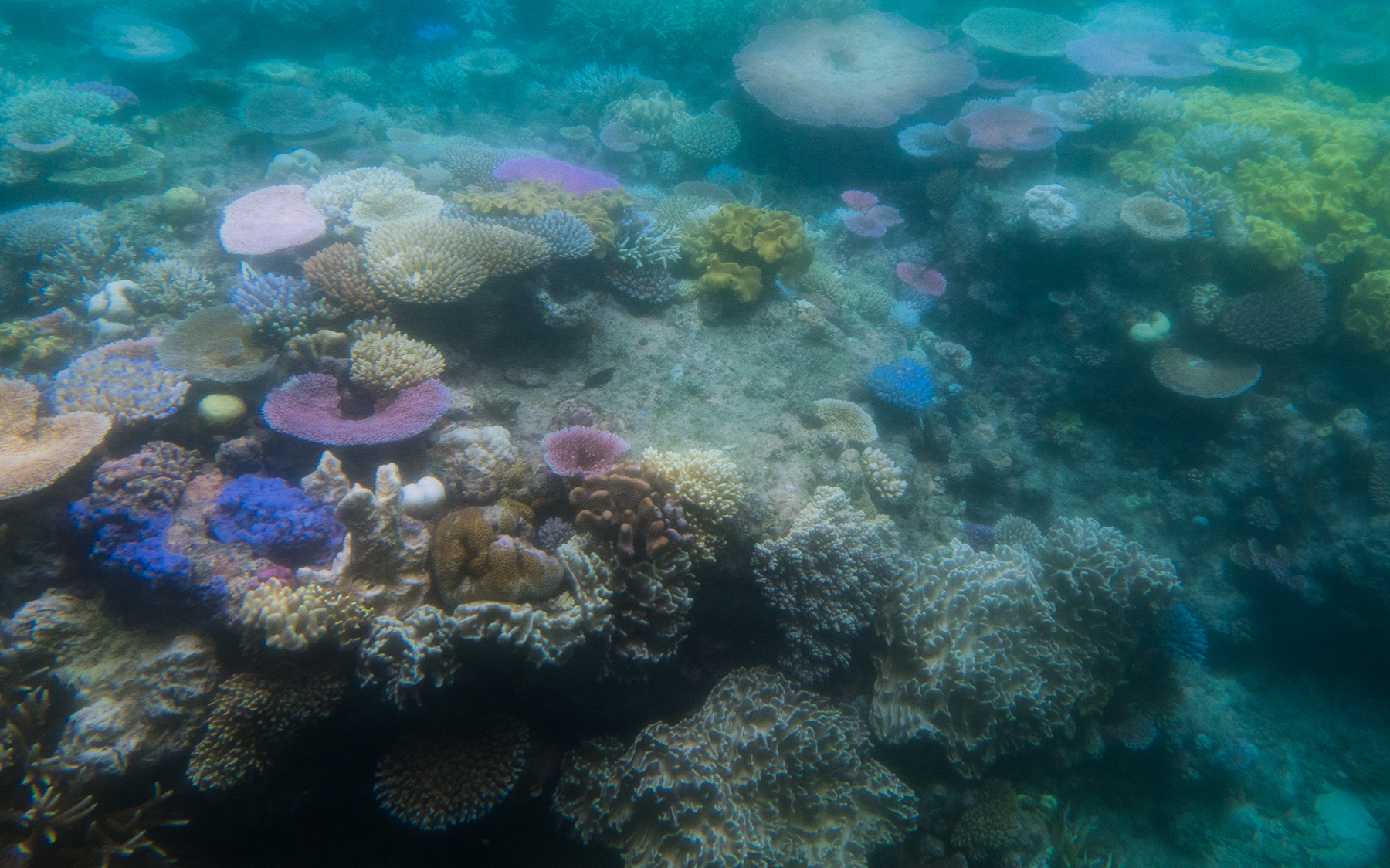Published on 8 December 2023
Less visible than heatwaves on land, marine heatwaves are nevertheless devastating for ecosystems. And, like a domino effect, they make life suffocating for some of the world's populations. Here's an update from Aida Alvera Azcarate, oceanographer at the University of Liège and promotor of the STEREO project NORTH-HEAT.
Fifty degrees in the United States, Canada and China, fires ravaging Greece, record temperatures across Europe... Global warming has become even more perceptible this summer of 2023. But while the flames are plain for all to see, things are burning under the surface too: marine heatwaves are a lesser-known phenomenon, but just as important.
“We're talking about periods of increased heat in the oceans and seas over a given period,” explains Aida Alvera Azcarate, an oceanographer at the University of Liège. “They depend on two things: masses of water from warmer regions arriving in colder regions, and atmospheric conditions that warm the water.”
As with land-based variants (in Belgium: at least 5 consecutive days with 25°C or more, including at least 3 days with 30°C or more), there are numerical criteria for defining marine heat waves. In concrete terms, they occur if, for more than 5 days, the sea surface temperature is higher than 90% of the time. However, there is a significant difference between the two phenomena. “Marine heat waves can occur in winter,” points out Aida Alvera Azcarate. “The water temperature can then reach 14 degrees. That might not sound like much compared with summer, but 3 to 4 degrees more than the climatological average is a lot.”
Marine heatwaves break 2003 records
Water temperature data is measured via satellites all across the world. And they show a clear trend over the last 20 years: global warming has amplified the marine heatwave phenomenon (see video above). On 24 July 2023, the temperature at the surface of the Mediterranean Sea reached 28.71°, beating the record of 28.25° set 20 years earlier. The Mediterranean basin is particularly affected by heat waves, whether on land or at sea.
“The Mediterranean Sea is warming faster than the others,” says Aida Alvera Azcarate. The effects of global warming are felt there more because it is enclosed (by land, editor's note) and because of the latitude at which it is located.”
“With the extreme temperatures observed (cold or hot), some species are forced to flee their natural environment.”
Two marine heatwaves in the North Sea in 2023
And what about the North Sea? The ULiège researcher is trying to find out with the NORTH-HEAT project (High resolution marine heat waves in the North sea: history, impacts, causes), funded by the STEREO programme of the Federal Science Policy (BELSPO). “In the summer of 2022, we observed a marine heat wave from May to September. Before, we weren’t as alarmed about the North Sea. When it's 3 degrees warmer, it's only ever 21° instead of 18°. People think it's great to have warmer water.” Last June (see infographic below), an unprecedented heatwave crossed the Atlantic Ocean (and therefore affected the North Sea), with temperatures 5 degrees higher than the seasonal norm on the British coast.

Since 1982, researchers working on the North-Heat project have counted 76 marine heat waves in the North Sea alone. And most of these have occurred since the start of the 2nd millennium. The culprit: global warming. In 2023, the researchers observed 2 heat waves (in red in the graph below): one in winter (between 1 and 22 January 2023), the other in summer (between 13 June and 3 July 2023). The latter is “one of the largest marine heat waves ever recorded”, according to the researchers, with temperatures up to 4° above the seasonal average in the UK and Northern Ireland, and an average increase of 2° for the North Sea as a whole.

Within the scientific community, there is much debate about the origin of marine heatwaves. But almost everyone agrees that climate change is dangerously amplifying the phenomenon. Atmospheric conditions (i.e. the reduction in the amount of dust in the Sahara, which, by settling on the water, reflects the sun's heat and prevents the ocean from absorbing it and warming up) and waste and discharges from ships (such as sulphur, for example) are two other causes often cited.
Disastrous effects on marine flora and fauna
Marine heatwaves have a cascading effect. Firstly for ecosystems. “Living organisms adapt to water temperature to a certain extent,” explains Aida Alvera Azcarate. But given the extreme temperature peaks observed (cold or hot), some species are forced to flee their natural environment. Fish can swim, but for crabs, for example, it's more complicated". What's more, some seabirds that feed on fish are becoming endangered species as a result of these forced migrations (see Franceinfo). Similarly, bacteria can develop in the heat and contaminate shellfish... or oysters, resulting in economic losses for oyster farmers. The same applies to fishing, which is bound to be difficult if there is a shortage of fish.
Aida Alvera Azcarate, oceanographer at the University of Liège
Finally, what does the future hold for corals and algae, attached to the seabed and unable to escape? Some of these species, such as seagrass beds, not only provide a home for fish but also act as carbon sinks, capturing CO2 and limiting global warming. Aida Alvera Azcarate confirms that the losses to biodiversity are enormous, citing the marine heatwave of 2003, which revealed the excess mortality of certain species. “What's more, species that have migrated can invade their new environment (these are known as invasive species), and then decimate other species.”

Biodiversity may be affected by marine heatwaves, but human beings are no different. Aida Alvera Azcarate runs through the list: the omnipresence of jellyfish around beaches, wind turbines that no longer turn because of weaker winds...
And the weather. “A marine heatwave increases the temperature of the water, which evaporates more into the atmosphere and can then lead to heavy rain.” The outlook for the oceans is not rosy, especially as marine heatwaves are set to increase in the years ahead. “Before, a marine heatwave lasting several months was considered exceptional. Now I'm afraid it's becoming the norm...”
More information
- STEREO projet NORTH-HEAT: High resolution marine heat waves in the North sea: history, impacts, causes
- Article published in the framework of the project:
Mohamed, B. A., Barth, A., & Alvera Azcarate, A. (19 September 2023). Extreme marine heatwaves and cold-spells events in the Southern North Sea: classifications, patterns, and trends. Frontiers in Marine Science, 10, 1-17.
- Source of the main image: Sea Surface Temperature Anomaly (°C) for June 2023, compared to the reference period 1991-2020. Data source: ERA5. Credit: Copernicus Climate Change Service/ECMWF in Record-breaking North Atlantic Ocean temperatures contribute to extreme marine heatwaves - Copernicus Climate Change Service